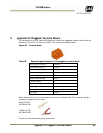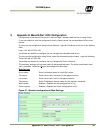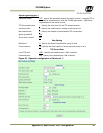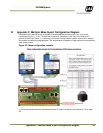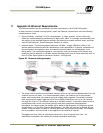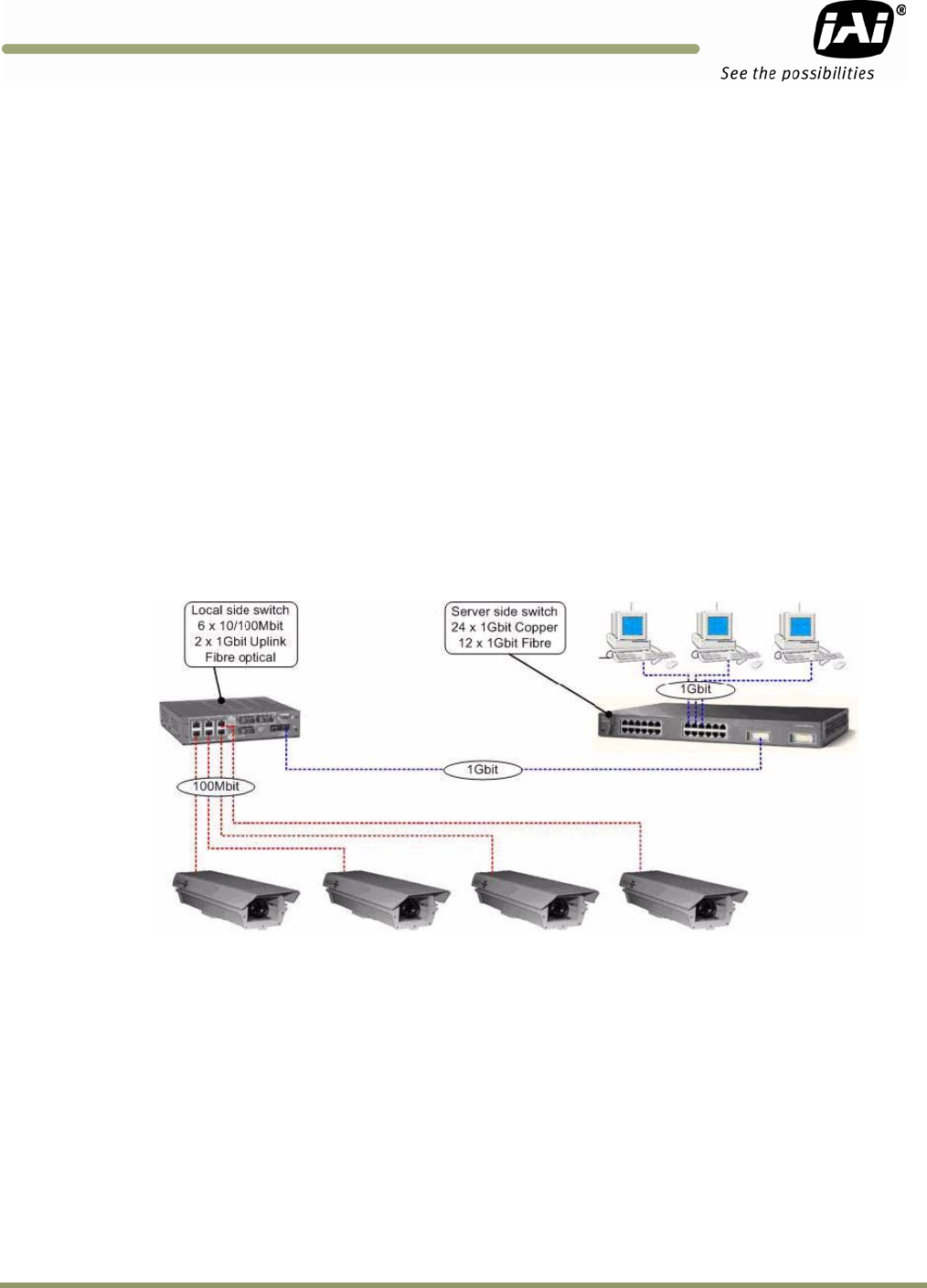
Appendix G: Ethernet Requirements 95
VIS-CAM System
11 Appendix G: Ethernet Requirements.
The Ethernet media is the key component for data transmission in the VIS-300/400 system.
In order to ensure a smooth running system, install the Ethernet infrastructure with the following
considerations in mind:
• Physical cabling - minimum Cat 5E is recommended – in larger systems, Cat 6 or fiber optic
cables are recommended for backbones with high traffic loads. It is strongly recommended, that
the quality of the installed Ethernet cabling is verified with a suitable network tester (certifier)
such as Fluke Optiview, Fluke Etherscope, Lantek 6 or similar.
• Network speed – The minimum speed required is 100 Mbit – though 1000 Mbit (1Gbit) is the
optimal speed and ensures sufficient bandwidth in most applications. In general, assessment of
network speed is an important issue, and should have been taken into consideration in the
design phase. The transmission speed on a local gantry with (for example) 4 EN-Camera units,
could very well be based on a 100 Mbit network topology which then is linked externally with a 1
Gbit FO (Fiber Optic) uplink to the server location – see Figure 96
Figure 96. Network cabling example:
• The actual traffic load that the individual cameras inflict on the network depends heavily on the
cameras current run mode – in a normal operable system, the cameras run in asynchronous
mode, which means that the cameras only grab images when triggered. Converted to network
load, asynchronous image triggering with a rate of 3600 incidents per hour (a car per second)
will typically inflict a 3-4% load per camera on a 100 Mbit network. If the same camera is set to
synchronous mode, which is the mode typically used during alignment and diagnostics
procedures, the camera grabs the images with a speed of approximately 10 images per second
(measured on a 1.4 Ghz Intel Centrino based laptop) – the load will now rise to around 30% per
camera. Even the drastic increase in network load when using synchronous mode, will normally
not be a problem, since the mode is only applied to the cameras of interest.
Throughput per lane: Four (4) vehicles per second for a five (5) second burst rate – not
indefinitely sustainable. One vehicle per second sustainable indefinitely.



